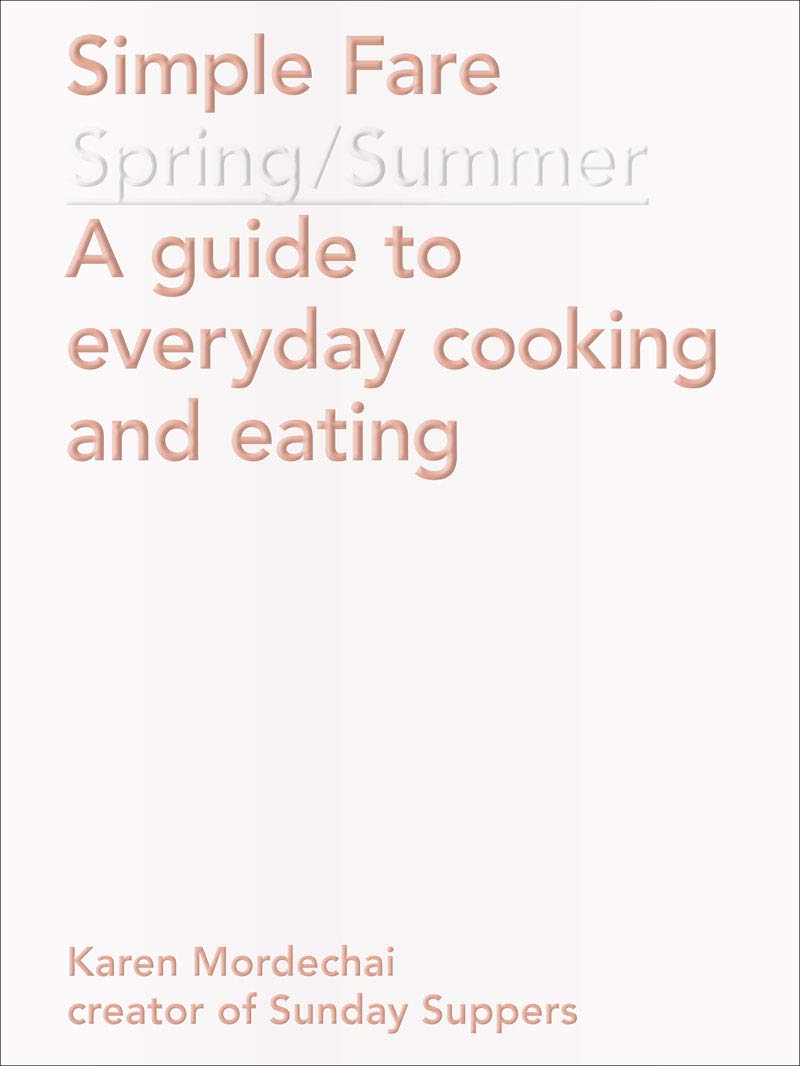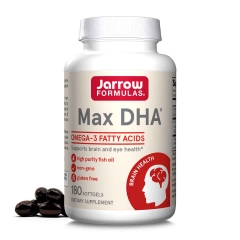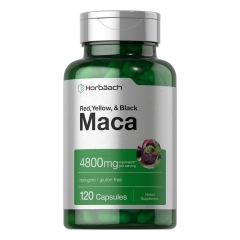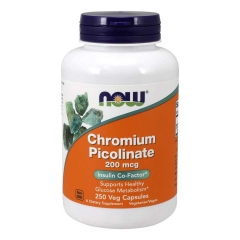-
 Thanh toán đa dạng, linh hoạtChuyển khoản ngân hàng, thanh toán tại nhà...
Thanh toán đa dạng, linh hoạtChuyển khoản ngân hàng, thanh toán tại nhà... -
 Miễn Phí vận chuyển 53 tỉnh thànhMiễn phí vận chuyển đối với đơn hàng trên 1 triệu
Miễn Phí vận chuyển 53 tỉnh thànhMiễn phí vận chuyển đối với đơn hàng trên 1 triệu -
 Yên Tâm mua sắmHoàn tiền trong vòng 7 ngày...
Yên Tâm mua sắmHoàn tiền trong vòng 7 ngày...

- Publisher:Abrams; Illustrated edition (April 18, 2017)
- Language:English
- Paperback:192 pages
- ISBN-10:1419724142
- ISBN-13:978-1419724145
- Item Weight:2.93 pounds
- Dimensions:9.75 x 0.75 x 13 inches
- Best Sellers Rank:#768,433 in Books (See Top 100 in Books) #638 in Seasonal Cooking (Books)
- Customer Reviews:4.6 out of 5 stars 34Reviews

Mô tả sản phẩm
Review
“Sunday Suppers is a beautiful meditation on the satisfaction of gathering—good food, friends and family, community—and sharing in the powerful experience of cooking and eating together.”
(Melissa Hamilton and Christopher Hirsheimer, authors of Canal House Cooking)“Karen's photography and tasteful style is, as always, something in which to revel and luxuriate.”
(The Kitchn)“Since that first communal meal, Sunday Suppers has grown from a humble dinner series into a hugely successful blog and a New York Times-acclaimed cookbook.”
(Edible Brooklyn)"Karen Mordechai is a young, hip, and hippie version of Martha Stewart whose blog, Sunday Suppers, caters to the stylish and food-obsessed New Yorker.”
(FOOD52)“Photographer and food stylist Karen Mordechai began Sunday Suppers with a simple dinner served in her Williamsburg apartment. Today, it has grown into a beloved communal cooking center hosting dinners and workshops in a bright studio space in Brooklyn.”
(Williams Sonoma)“Karen Mordechai offers a gentle reminder to slow down and enjoy preparing simple meals to share with loved ones.”
(Nathan Williams, Kinfolk Magazine)"Sunday Suppers features Karen's achingly beautiful photography and...recipes centered around get-togethers...with easy preparations...and simple, elegant styling." (Goodreads)
"Karen is such a force—a talented woman who wears many hats in her business yet does it with such style and ease (and a warm smile)...there is no stopping this lovely woman from bringing good food, joy and beauty into the world." (Holly Becker, decor8)
"Eating well isn’t about overdoing it. Assembling the freshest ingredients, preparing them simply but wisely, and serving them on well-chosen plates is all it takes. Consider this oversize cookbook—with its inviting photography and ample white space—to lead by example." (Vogue.com)
"As its name 'Simple Fare' suggests, the book's dishes are minimalist, wholesome and easy to make." (T: The New York Times Style Magazine)
"Karen Mordechai's gorgeous, thoughtful, super useful new book, Simple Fare: Spring/Summer: A Guide to Everyday Cooking and Eating has reignited my love affair with cookbooks." (InStyle.com)
"Keep this beauty on your coffee table. The photos are museum-level gorgeous." (PureWow)
Product Description
Simple Fare: Spring/Summer is a beautifully illustrated cookbook featuring seasonal, market-driven fare that encourages readers to cook simply and intuitively.
Karen Mordechai of the acclaimed Brooklyn-based food community Sunday Suppers shares her meals for cooking at home and her studio. The recipes are designed to excite and inspire, each offering 3 to 5 alternate ingredients that can be used in the same preparation. A smoked beet panzanella with purple kale, radicchio and ricotta, for example, suggests a carrot, mizuna, watercress, and yogurt adaptation or tomato, arugula, purple basil, and burrata, allowing the reader flexibility depending on what is fresh at the market. The food is approachable but decidedly nuanced, balancing unexpected flavor profiles with beautiful presentations. With 68 recipes and 97 variations, Simple Fare is an oversize, distinctively designed kitchen essential of more than 165 seasonal recipes. This book is a valuable resource for avid cooks and beginners alike.
Volume two of the series, Simple Fare: Fall/Winter will be available in September 2017.
About the Author
Karen Mordechai is an author, photographer, and founder of Sunday Suppers and the product line ILĀ. Karen’s work is regularly featured in Food & Wine, Bon Appétit, Martha Stewart Living, the New York Times, Real Simple, and many others. Her first book Sunday Suppers: Recipes + Gatherings has received global acclaim, was a number-one-selling book on Amazon, and was voted by the New York Times Book Review as one of the top cookbooks of the year.
Karen resides with her husband and daughter in Los Angeles and works in Brooklyn and California.
Excerpt. © Reprinted by permission. All rights reserved.
Simple Fare Spring Summer
By Karen Mordechai, Laura DozierAbrams Books
Copyright © 2017 Karen MordechaiAll rights reserved.
ISBN: 978-1-4197-2414-5
Contents
Introduction, 10,Usage/Market Variations, 15,
Seasonality, 18,
Essentials, 20,
Breakfast, 34,
Toasts, 62,
Bowls, 78,
Plates, 86,
Vegetables, 100,
Mains, 112,
Snacks, 132,
Desserts, 148,
Dairy, 162,
Cook's Notes, 171,
Your Notes, 181,
Basic Ingredients, 186,
Sources, 188,
Index, 189,
Acknowledgments, 192,
CHAPTER 1
Usage/ Market Variations
I hear from many cooks that they will follow a recipe to a T; they wil create their list and take on a recipe like it is a didactic thing.
Here, we are breaking the mold a bit. If you go to market with the intention to make an oyster mushroom risotto, but the mushrooms are not looking great, or there are no oyster mushrooms in season, you can make an alternate decision.
Instead of mushrooms, sage, and Pecorino for your risotto, choose fennel, Parmesan, and thyme. The idea here is to offer alternates, which we call "market variations," based on the season and also to give readers guidance on some flavor profiles that work. In this way, readers can feel liberated.
Each recipe is built with a few seasonal items, herbs, and flavorings. These original ingredients are underlined. Beneath the recipe title, you will find two or three alternate versions of the original ingredients. These variations can be substituted for the underlined ingredients and are listed in the same order as the items that they are replacing in the recipe title. Unless otherwise noted, the alternate ingredients can be prepared and incorporated into the finished dish in the same manner as the original.
To help you utilize the market variations in the book, there is a "Cook's Notes" section (see page 171) that offers measurements and additional information on how to prepare the variations. Be sure to reference that section for further assistance when making a recipe with a variant ingredient.
CHAPTER 2Seasonality
Cooking seasonally means supporting our local farmers and producers. It also means celebrating produce at its peak and best form.
There is a natural rhythm to the markets and the seasons. In winter, we stay closer to the home and cook warm and nurturing meals. Most of the produce is in the form of root vegetation, some greens, and limited fruits. As the weather warms, new and exciting produce starts to become available. Ramps, morels, and rhubarb make their appearance, as well as peas, alliums, and other vibrant greens. In summer we find berries and tomatoes and stone fruit. The market quite literally blooms. Of course, there are no hard-and-fast rules; some cities and climates offer varied seasonal produce, but this is the general format, give or take.
These recipes will guide you through the Spring/Summer offerings at your local markets, as they tend to unfold in different locales. As there is always a transition between seasons, you'll find that reflected in the meals. Slowly, as the weather warms, we begin to lighten our meals a bit, but the beginning of spring can still be chilly. We ease into the season. Some of the dishes are warm and soothing, while others are lighter, cooler options. As your personal surroundings change, your cooking often reflects those changes.
CHAPTER 3Essentials
In this section, you will find the building blocks of our kitchen. These are the foundations of our meals, and great things to stock your larder with. At the beginning of the week, usually on a Sunday evening, I will make a stock, a grain, or pickles to keep in the refrigerator for the week. The beauty is having them at the ready on busy weekdays to enlighten or enhance your meals, but also to speed things up a bit. You will also find practical guidance: a guide to grain cooking and one on making eggs properly. These things are so useful to have in your culinary repertoire and will allow you to cook intuitively. Removing the guesswork lets you have more fun with the recipes in the following chapters.
Bread
half-day rye
Makes 1 loaf
We love an artisanal bread from a local bakery, but on a day when you have the urge to bake, this bread is a wonder — crusty on the outside and pillow-like in the interior. While a classic bread recipe can take several days to prepare, this one requires merely a half day to make and rise, and will become a go-to for everyday usage. Use high-quality milled rye flour for best results. Serve toasted and well buttered.
3¼ cups plus 2 tablespoons (340 g) rye flour
3 cups (375 g) all-purpose flour, plus more for dusting
1 tablespoon active dry yeast
3½ teaspoons (17 g) kosher salt
4 teaspoons sugar
1 tablespoon unsalted butter
In a large bowl, whisk together the flours, yeast, salt, and sugar until well combined. Add 3 cups (720 ml) room-temperature water and mix with a wooden spoon until a shaggy, sticky dough forms. Cover bowl with plastic wrap and set in a warm, draft-free place to rest for 4 hours.
Butter a 16 x 4-inch (approximately 40.5 x 10-cm) extra-long loaf pan. Turn the dough out onto a well-floured work surface. With floured hands, and handling the dough as little as possible, gently shape into an approximate 16 x 12-inch (40.5 x 30-cm) rectangle. Fold the rectangle into thirds, as you would a letter, to form a long, narrow loaf, about the size of the loaf pan. Carefully lower the dough into the loaf pan and cover loosely with a clean dish towel; place in a warm, draft-free place to rise for an hour, or until the loaf has doubled in size.
Preheat the oven to 425°F (220°C). Remove the dish towel from the pan and, using a fine-mesh sieve, lightly dust the top of the loaf with flour. Transfer it to the oven and bake until golden brown, about 25 minutes.
Transfer the bread to a wire rack and let cool in the loaf pan for 5 minutes. Invert the pan to remove the bread and allow to cool completely.
Storage - Best enjoyed immediately. If storage is necessary, keep in a sealed bag.
Guide to Cooking Grains
Healthful grains are a great thing to have on hand. I tend to make a pot weekly and keep it handy to add to an everyday bowl, salad, or even soup. It makes the meals hearty and enriching. Choosing well-milled quality grains is important for both nutrition and taste. You may use water or any stock of your preference to infuse additional flavor.
In a medium saucepan, heat 1 tablespoon olive oil over medium-low heat. Add the grain of your choice and toast in the saucepan until lightly golden and fragrant, 2 to 3 minutes. Add the water (or stock) and a pinch of salt and bring to a boil. Reduce the heat to low, cover, and cook for the time indicated by the chart. Remove from the heat, leave grains covered for 5 minutes, and fluff the grains before serving or using in a recipe. If you are making farro, simply drain any excess water before serving. If you are cooking more than 1 cup of a grain, use a ratio of 1 cup grain to 1 tablespoon olive oil to toast it.
Grain to water (or stock) ratio:
quinoa
1:1¾ cups (170 g:420 ml)
25 minutes
farro
1:3 cups (200 g:720 ml)
30 minutes
bulgur
1:2 cups (140 g:480 ml)
15 minutes
short-grain brown rice
1:2 cups (190 g:480 ml)
45 minutes
long-grain white rice
1:1½ cups (180 g:360 ml)
20 minutes
Eggs, a guide
A beautifully prepared egg is a staple in many of our bowls, toasts, and other dishes, enriching a meal with protein and creaminess. When poaching, the goal is to achieve the perfect oval: white on the outside, oozy on the inside. For frying or boiling, getting the yolk to the preferred doneness determines its perfection. These are our methods, tried and true for both single and multiple preparations.
fried, Makes 1 egg
1 tablespoon unsalted butter or olive oil
1 egg
In a small nonstick sauté pan, melt the butter over medium-low heat. Swirl the pan so its surface is completely coated. Crack the egg into a ramekin and gently slide it from the ramekin into the middle of the pan. Cook until the white is opaque and set, 2 to 3 minutes. Using a spatula, gently flip the egg and cook on the second side to the desired doneness, about 30 seconds longer for a runny yolk, 1 to 2 minutes for a partly set yolk, and 3 to 5 minutes for a fully cooked yolk. Test for doneness by very gently pressing the yolk once the egg is flipped. A runny yolk will feel very delicate and will ripple beneath your finger, a partly set yolk will have a slight resistance, and a fully set yolk will feel firm.
To fry multiple eggs, follow the same method, using a pan large enough that the eggs can fit comfortably without touching and enough butter so that the pan's entire surface is lightly coated. Crack each egg into a ramekin and slide them into the pan one at a time.
poached, Makes 1 egg
1 tablespoon distilled white vinegar
1 cold egg
Fill a small saucepan halfway with water and add the vinegar. Bring to a slow simmer over medium heat, then reduce the heat to low. Crack the egg into a ramekin. Using a wooden spoon, gently swirl the water so it creates a whirlpool. Count to five before carefully sliding the egg into the middle of the swirling water. Cook for 4 to 5 minutes, making sure that the water temperature stays low enough that bubbles do not break on the surface. Carefully remove the egg using a slotted spoon and set on a paper towel to remove excess water.
To poach multiple eggs, use a large, shallow saucepan, and follow the same method, skipping the whirlpool step. Crack each egg into a ramekin and gently slide them into the water one at a time, spacing them far enough apart that they do not stick to one another.
boiled, Makes 1 egg
1 gg
Bring a small saucepan of water to boil over high heat. Using a slotted spoon or tongs, carefully lower the egg into the boiling water and cook until it has reached the desired doneness, as referenced in the chart on the right. Gently remove the egg and run under cold water to peel.
Egg boiling times:
soft | runny yolk
4 to 5 minutes
medium | partly set yolk
6 to 8 minutes
hard | fully cooked yolk
9 to 10 minutes
To boil multiple eggs, follow the same method, using a saucepan large enough to hold the eggs in one layer without crowding.
Garlic Confit
thyme lemon peel
Makes 1 quart (1 L)
The foundation of many of our dishes has an aromatic base, consisting of herbs and garlic as the building blocks of flavor. This garlic confit takes a bit of preparation, but it will keep in your refrigerator for weeks and will become an invaluable daily tool. It can be used in place of garlic in any recipe and adds smoky, roasted notes for a bit more complexity. We also love cooking with the garlic oil itself, and using it on salads, toasts, and pastas.
1 lemon
7 heads garlic, cloves separated and peeled
2 sprigs fresh thyme
3 cups (720 ml) olive oil, plus more if needed
Preheat the oven to 250°F (120°C).
Using a vegetable peeler, remove all the yellow peel from the lemon, avoiding the bitter white pith. Drop the peels into a small ovenproof baking dish and add the garlic and thyme. Pour the olive oil over to cover, adding more as needed to fully submerge the garlic. Cover and bake until the garlic cloves are golden and tender, about 2 hours.
Remove from the oven, uncover, and let cool. Transfer the garlic and oil to a sealed container and refrigerate until ready to use.
Storage - Refrigerate in a sealed container for up to 2 to 3 weeks.
Basic Vegetable Stock
Makes 2 quarts (2 L)
Making a homemade stock is a great way to infuse flavors and seasonings into many of your dishes and soups. We like to keep a few pints in the freezer and defrost them as needed. A nice, light, flavorful vegetable version is great for the warmer months of spring and summer. Feel free to use any combination of vegetables and herbs you may have in your refrigerator.
1 tablespoon olive oil
2 onions, quartered
1 carrot, halved
1 fennel bulb, quartered
5 white mushrooms, halved or quartered
4 or 5 sprigs fresh thyme
2 bay leaves
1 small bunch parsley
1 teaspoon whole peppercorns
1 leek, coarsely chopped and well washed
5 garlic cloves, smashed
Heat the olive oil in a large stockpot over medium-high heat. Add all the ingredients and cook, stirring occasionally, until the vegetables begin to soften but don't yet brown, 5 to 7 minutes. Add 4 quarts (3.8 L) cold water and bring to a boil. Reduce the heat to low and simmer until the stock has reduced by half, 1 to 1½ hours. Strain the liquid, discarding the solids, and transfer the stock to storage jars.
Storage - Refrigerate in sealed containers for 3 to 4 days or freeze for up to 1 year.
Pickles
Makes 1 pint (480 ml)
Ideas for ingredients to pickle
fruit
grape / apple / peach / blackberry / Anjou or Seckel pear / nectarine / elderberry / cherry / rhubarb / apricot / plum / husk cherry / bayberry / gooseberry / huckleberry / wild strawberry
vegetable
green tomato / cucumber / cabbage / fennel / poblano pepper / carrot / cauliflower / green bean / mushroom / turnip / chile pepper / beet / corn / radish / shallot / pearl onion / ramp / spring onion
other
golden raisin / currant / watermelon rind / edible flower / chive blossom
We are constantly pickling, and there is (almost) no limit to what one can pickle. This basic brine can be used to quick-pickle fresh fruits, vegetables, and other items, like raisins and currants. Our refrigerator is always stocked with a few pickled items, and they add an easy crunch, color, and acidity to any dish: salads, sandwiches, toasts, eggs, etc. We've also included a list of all the items we love to pickle using this basic brine, plus a few minor variations. You can certainly add other spices, herbs, and peppercorns to the pickling liquid for extra flavor. Experiment and find your own way. This recipe will make enough brine to pickle 1 cup (240 ml) of the food of your choice. If you'd like to pickle a larger quantity, simply double (or triple) the brine ingredients and prepare as directed. Just ensure that the ingredient to be pickled is properly covered in the brine.
1½ cups (360 ml) white wine vinegar
¼ cup (50 g) sugar
½ teaspoon kosher salt
1 bay leaf
1 teaspoon whole black peppercorns
1 teaspoon mustard seeds
1 teaspoon coriander seeds
1 cup (240 ml) fruit, vegetable, or other item to be pickled (see left)
Combine the vinegar, ½ cup (120 ml) water, sugar, salt, bay leaf, peppercorns, mustard seeds, and coriander seeds in a 2-quart (2-L) saucepan and bring to a boil. Reduce the heat to low; cover and simmer for about 20 minutes.
Pack the item to be pickled into a clean quart-sized (960-ml) jar. Pour the brine into the jar and let cool. Cover and refrigerate for at least 2 hours, stirring gently once or twice.
Storage - Refrigerate in a sealed jar for up to 1 month.
Pickled Red Onion
Makes 1 cup (240 ml)
We use these pink pickles liberally. They are traditionally meant for tacos but are equally good on avocado toast, in salads, and even on soups.
1¼ cups (300 ml) distilled white vinegar
Juice of 2 limes
1 bay leaf
1 teaspoon fine sea salt
¼ cup (50 g) sugar
1 large red onion, thinly sliced
In a small saucepan, combine all the ingredients except the onion and bring to a simmer over low heat. Place the onion in a large bowl and carefully pour the brine over the onion. Let cool, then transfer to a clean pint-sized (480-ml) jar; cover and refrigerate.
Storage - Refrigerate in a sealed jar for up to 1 month.
Pickled Mustard Seeds
Makes approximately 2 cups (480 ml)
These little pops of pickle are a beautiful topping for salads and sandwiches; their tangy crunch adds a little bit of surprise to the dish.
1 cup (160 g) mustard seeds
1 bay leaf
2 cups (480 ml) white wine vinegar
½ cup (100 g) sugar
1 tablespoon kosher salt
In a small saucepan, combine all the ingredients and % cup (180 ml) water and bring to a simmer over low heat. Cook until the seeds are plump and tender, about 1 hour. If too much liquid evaporates, add water as needed to keep the seeds completely covered. Let cool, then transfer to a clean pint-sized (480-ml) jar; cover and refrigerate.
Storage - Refrigerate in a sealed jar for up to 1 month.
CHAPTER 4Breakfast
Breakfast, celebrated as the most important meal of the day, can vary so much in approach. Some days a bowl of yogurt or oats will do; others call for a heftier affair. Taking the time to start your day with self-care and nourishment is a wonderful ritual. We are constantly inspired by ingredients, colorful foods, and beautiful, clean flavors to create morning meals for all kinds of days. Some of these are simple breakfasts for one, while others will serve a small crowd — just multiply (or divide) as needed.
Poached Eggs
black quinoa
toasted buckwheat
kefir
fermented kraut
pepita
Serves 1
Market Variations
To make the market variations, replace the underlined ingredients with the items listed below. For more detail, see page 174.
Variation 1
white quinoa / puffed amaranth / yogurt / pickled onion / black sesame
Variation 2
farro / puffed millet / crème fraîche / avocado / hazelnut
Simple, healthful, and protein-rich, this dish is a great way to start the day. It also works well as a light lunch. We often have a cooked grain at the ready in our refrigerator, making the assembly even easier during the week. We use a local brand of fermented kraut that we love, but you can also use a homemade one.
¼ cup (40 g) uncooked buckwheat
¼ cup (60 ml) kefir
½ cup (100 g) cooked black quinoa (page 25)
¼ cup (25 g) fermented kraut
2 eggs, poached (page 26)
2 tablespoons pepitas (pumpkin seeds)
Preheat the oven to 350°F (175°C).
Arrange the buckwheat in a single layer on a rimmed baking sheet and toast in the oven until lightly golden and fragrant, 6 to 8 minutes. Remove from the oven and let cool.
Pour the kefir into a shallow bowl. Spoon the quinoa and kraut along the sides of the bowl and arrange the eggs on top. Top with the toasted buckwheat and pepitas.
(Continues...)Excerpted from Simple Fare Spring Summer by Karen Mordechai, Laura Dozier. Copyright © 2017 Karen Mordechai. Excerpted by permission of Abrams Books.
All rights reserved. No part of this excerpt may be reproduced or reprinted without permission in writing from the publisher.
Excerpts are provided by Dial-A-Book Inc. solely for the personal use of visitors to this web site.
- Mua astaxanthin uống có tốt không? Mua ở đâu? 29/10/2018
- Saffron (nhụy hoa nghệ tây) uống như thế nào cho hợp lý? 29/09/2018
- Saffron (nghệ tây) làm đẹp như thế nào? 28/09/2018
- Giải đáp những thắc mắc về viên uống sinh lý Fuji Sumo 14/09/2018
- Công dụng tuyệt vời từ tinh chất tỏi với sức khỏe 12/09/2018
- Mua collagen 82X chính hãng ở đâu? 26/07/2018
- NueGlow mua ở đâu giá chính hãng bao nhiêu? 04/07/2018
- Fucoidan Chính hãng Nhật Bản giá bao nhiêu? 18/05/2018
- Top 5 loại thuốc trị sẹo tốt nhất, hiệu quả với cả sẹo lâu năm 20/03/2018
- Footer chi tiết bài viết 09/03/2018
- Mã vạch không thể phân biệt hàng chính hãng hay hàng giả 10/05/2023
- Thuốc trắng da Ivory Caps chính hãng giá bao nhiêu? Mua ở đâu? 08/12/2022
- Nên thoa kem trắng da body vào lúc nào để đạt hiệu quả cao? 07/12/2022
- Tiêm trắng da toàn thân giá bao nhiêu? Có an toàn không? 06/12/2022
- Top 3 kem dưỡng trắng da được ưa chuộng nhất hiện nay 05/12/2022
- Uống vitamin C có trắng da không? Nên uống như thế nào? 03/12/2022
- [email protected]
- Hotline: 0909977247
- Hotline: 0908897041
- 8h - 17h Từ Thứ 2 - Thứ 7
Đăng ký nhận thông tin qua email để nhận được hàng triệu ưu đãi từ Muathuoctot.com
Tạp chí sức khỏe làm đẹp, Kem chống nắng nào tốt nhất hiện nay Thuoc giam can an toan hiện nay, thuoc collagen, thuoc Dong trung ha thao , thuoc giam can LIC, thuoc shark cartilage thuoc collagen youtheory dau ca omega 3 tot nhat, dong trung ha thao aloha cua my, kem tri seo hieu qua, C ollagen shiseido enriched, và collagen shiseido dạng viên , Collagen de happy ngăn chặn quá trình lão hóa, mua hang tren thuoc virility pills vp-rx tri roi loan cuong duong, vitamin e 400, dieu tri bang thuoc fucoidan, kem chống nhăn vùng mắt, dịch vụ giao hang nhanh nội thành, crest 3d white, fine pure collagen, nên mua collagen shiseido ở đâu, làm sáng mắt, dịch vụ cho thue kho lẻ tại tphcm, thực phẩm tăng cường sinh lý nam, thuoc prenatal bổ sung dinh dưỡng, kem đánh răng crest 3d white, hỗ trợ điều trị tim mạch, thuốc trắng da hiệu quả giúp phục hồi da. thuốc mọc tóc biotin
























 KHUYẾN MÃI LỚN
KHUYẾN MÃI LỚN Hỗ Trợ Xương Khớp
Hỗ Trợ Xương Khớp Bổ Não & Tăng cường Trí Nhớ
Bổ Não & Tăng cường Trí Nhớ Bổ Sung Collagen & Làm Đẹp
Bổ Sung Collagen & Làm Đẹp Bổ Thận, Mát Gan & Giải Độc
Bổ Thận, Mát Gan & Giải Độc Chăm Sóc Sức khỏe Nam Giới
Chăm Sóc Sức khỏe Nam Giới Chăm Sóc Sức khỏe Nữ Giới
Chăm Sóc Sức khỏe Nữ Giới Chăm sóc Sức khỏe Trẻ Em
Chăm sóc Sức khỏe Trẻ Em Thực Phẩm Giảm Cân, Ăn Kiêng
Thực Phẩm Giảm Cân, Ăn Kiêng Bổ Sung Vitamin & Khoáng Chất
Bổ Sung Vitamin & Khoáng Chất Bổ Tim Mạch, Huyết Áp & Mỡ Máu
Bổ Tim Mạch, Huyết Áp & Mỡ Máu Bổ Mắt & Tăng cường Thị lực
Bổ Mắt & Tăng cường Thị lực Điều Trị Tai Mũi Họng
Điều Trị Tai Mũi Họng Sức Khỏe Hệ Tiêu hóa
Sức Khỏe Hệ Tiêu hóa Chăm Sóc Răng Miệng
Chăm Sóc Răng Miệng Chống Oxy Hóa & Tảo Biển.
Chống Oxy Hóa & Tảo Biển.